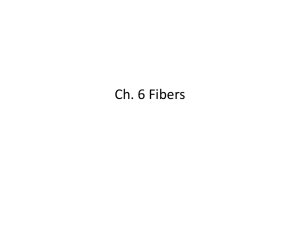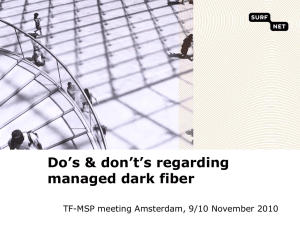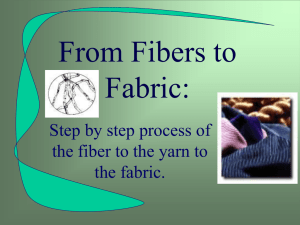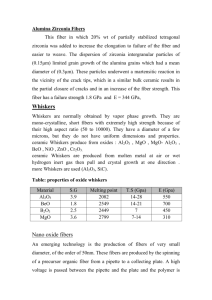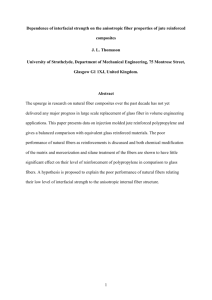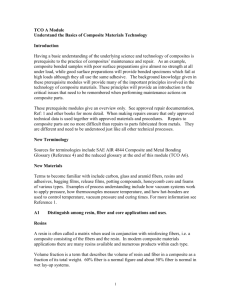Biocomposites
advertisement
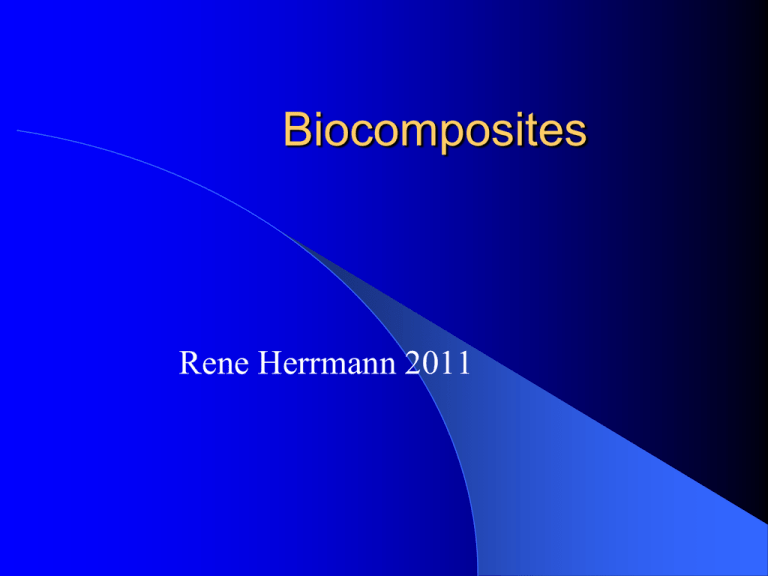
Biocomposites Rene Herrmann 2011 Biological Fibers There are 2 different types of biological fibers, animal and floral Biological fibers differ from their synthetic counter parts in that they can be hollow. This makes them in some cases very light. Synthetic fibers have a diameter of about 15 microns and can be made to great length. Biological fibers have ticknesses of about 100 microns which makes the spaces between the fibers much larger than in laminates made in synthetic fibers. The total resin usage is larger than in syntetic laminates Fiber length Biological fibers are short, about some cm. This is a real problem. The fibers absorb the mechanical load in the composite. The load must be transferred from one fiber to the next, the resin matrix is doing this. For this to work the fibers have to overlap in the laminate. The overlap is a large part of the fibers length. The statistical chance for fibers to not overlap sufficiently increases the shorter the fiber. Fiber types There are many fibers but flax (linen) and hemp are the most potential competitors to glas fiber. Another fiber is RAMIE. This fiber could outpreform glas fiber in strength. Our tests have shown that wool is not strong but the most ductile laminate results, with strain limit at 7%. Silk has proven to deliver visually appealing laminates but with less strength than hemp and flax, however also high strain limit (5%). Silk was difficult to wet with resin. Fiber durability Biological fiber can rott, to prevent this protection is needed before the end of product life is reached. This can be coatings of the product. Since all laminates must be protected from UV light (to prevent matrix decomposition) this is not a problem. Textiles and fabrics biological fiber can be woven exactly the same way as synthetic fibers biological fibers have a lower density and therefore mass than fiber glas, because of this are strand mat spray gun laminations not feasable. biological textiles are available in colored form, this can be a problem because the coloring may influence the resin wettability negatively. Fiber strength Biological fibers come in a variety of sizes, due to this also their mechnical properties vary. The measurement of youngs modulus and strain limit is possible but difficult on the fiber itself. The problem is the attachment of the fiber and the measurement of the fiber diameter. It is therefore better to measure a statistical amount of fibers and deterime an average property. Average fiber strength The procedure starts with cutting a textile to a defined size and weighting its mass. You get a value for g/m^2 of the fabric. You laminate with resin whos density is known. After lamination you weight the laminates total mass and find resin mass and volume, calculate fiber volume and fiber volume fraction. You measure the E modulus of the laminate and using volume fraction find the youngs modulus of the fiber only. Due to the number of calculations (subtraction) the result will have an large relative error. Experiment1 Make a laminate and deterime experimentally the fibers youngs modulus and strain limit and the textiles mass per area. Deliver an estimate for resin uptake and laminate thickness per layer. Experiment2 Take a yawn of a bilogical fiber, find the number of k (number of tousend fibers in the yawn). Measure the average diameter of the fibers in the yawn and calculate an average total cross section and test the material in a tensile test.


